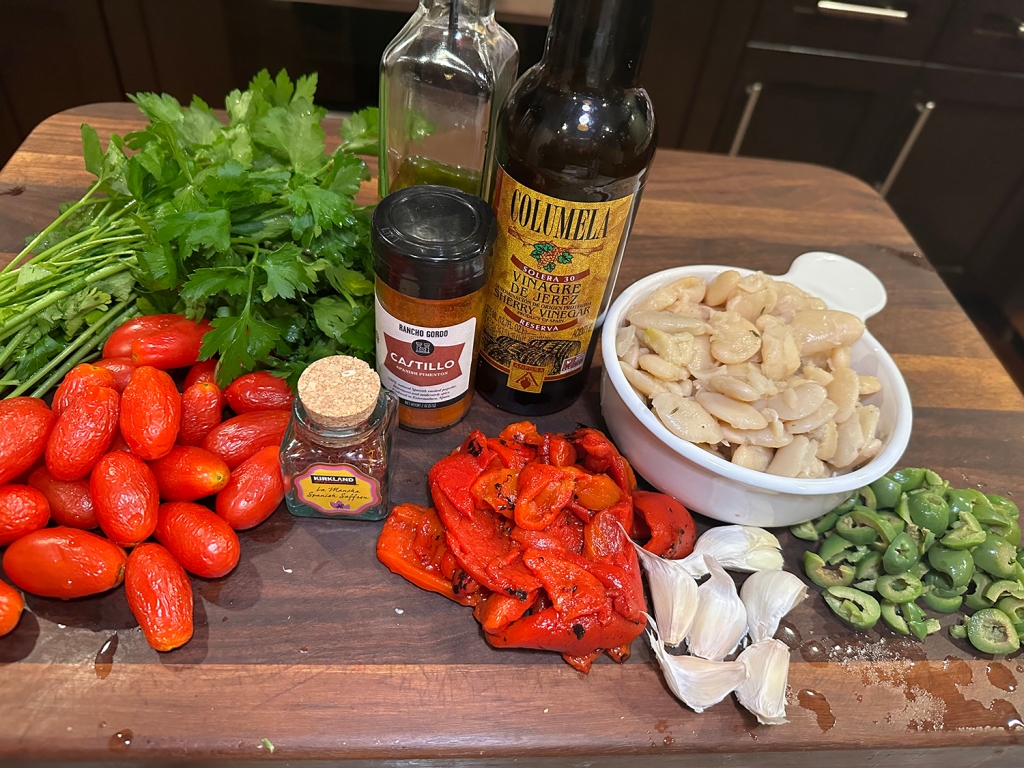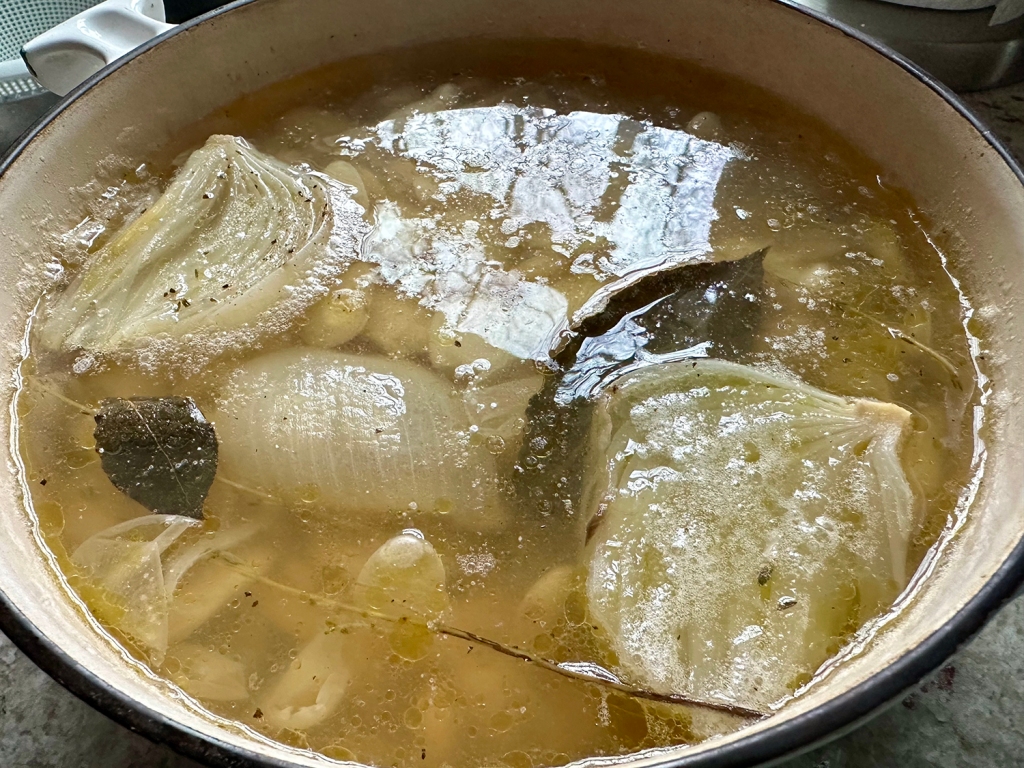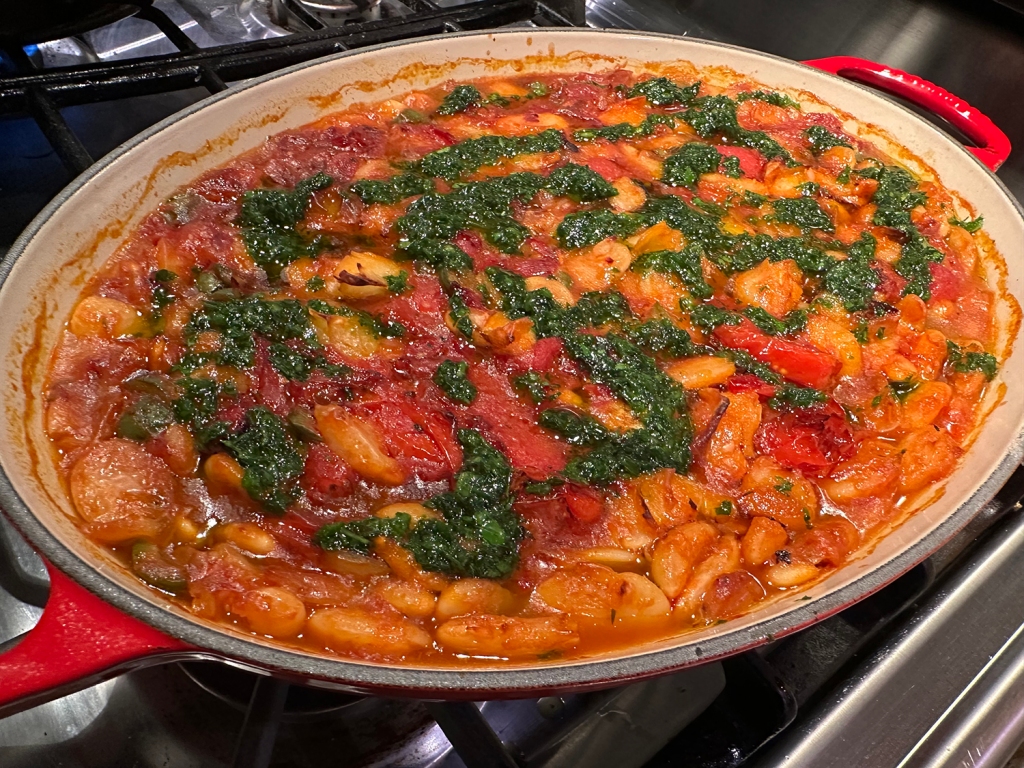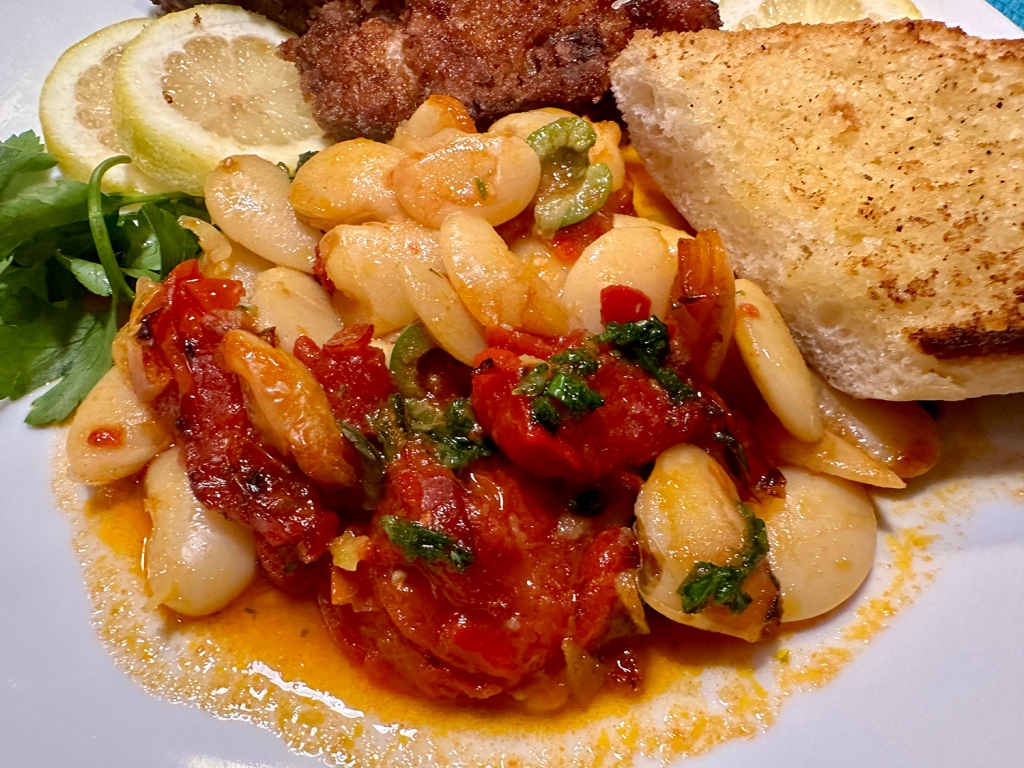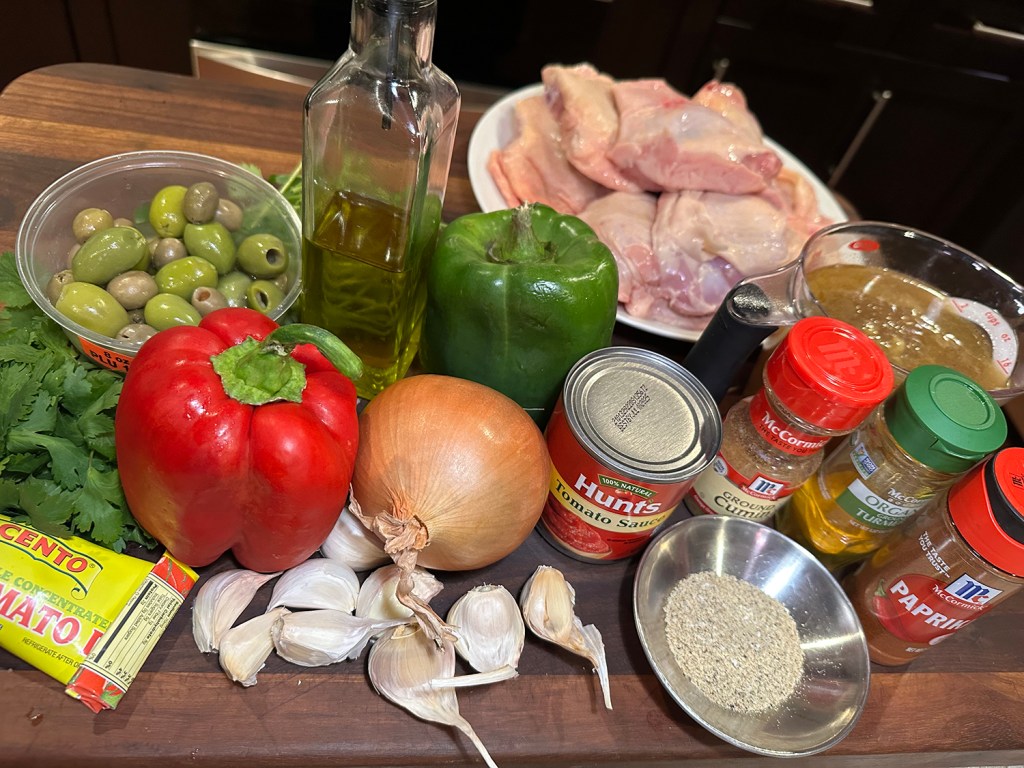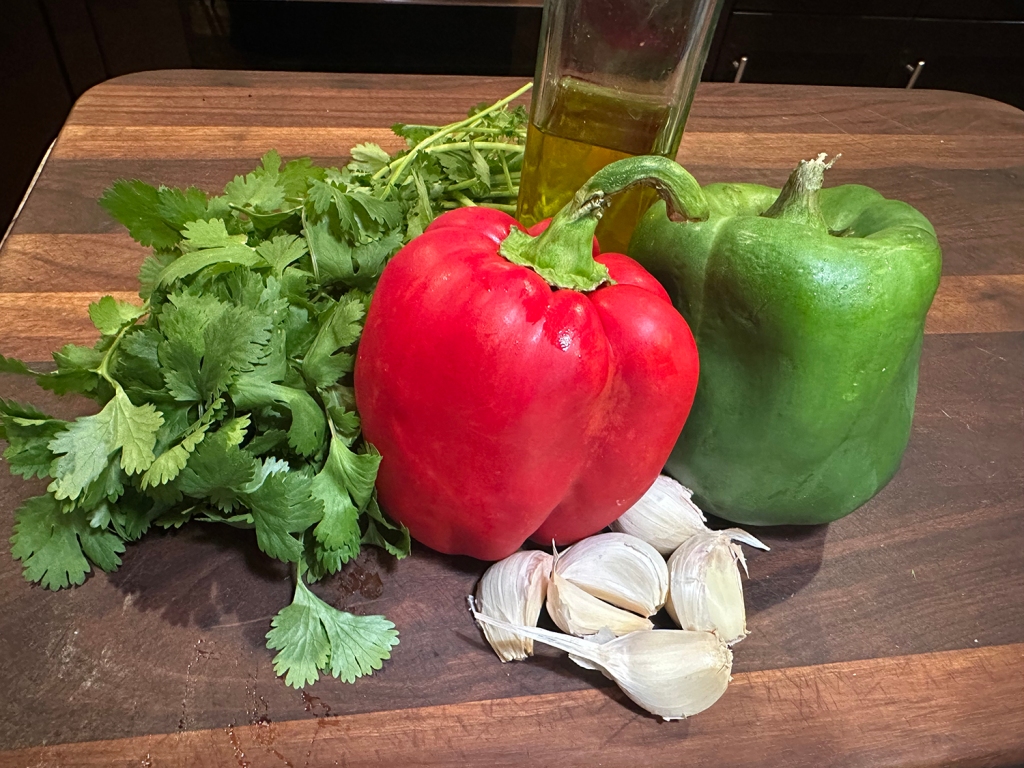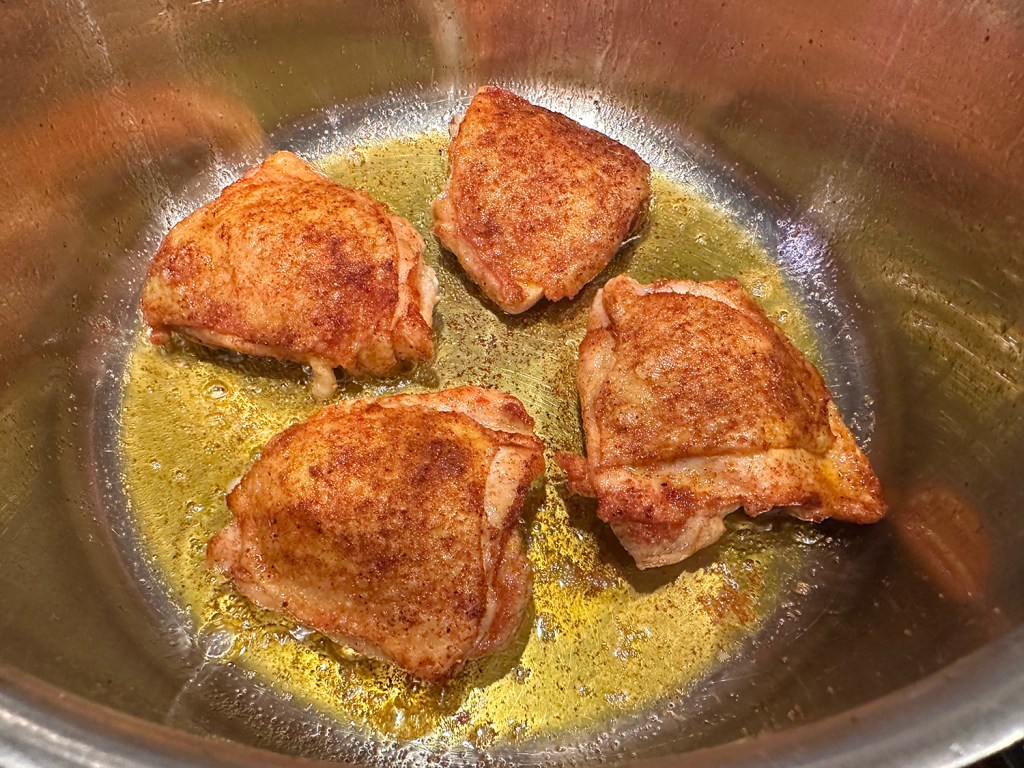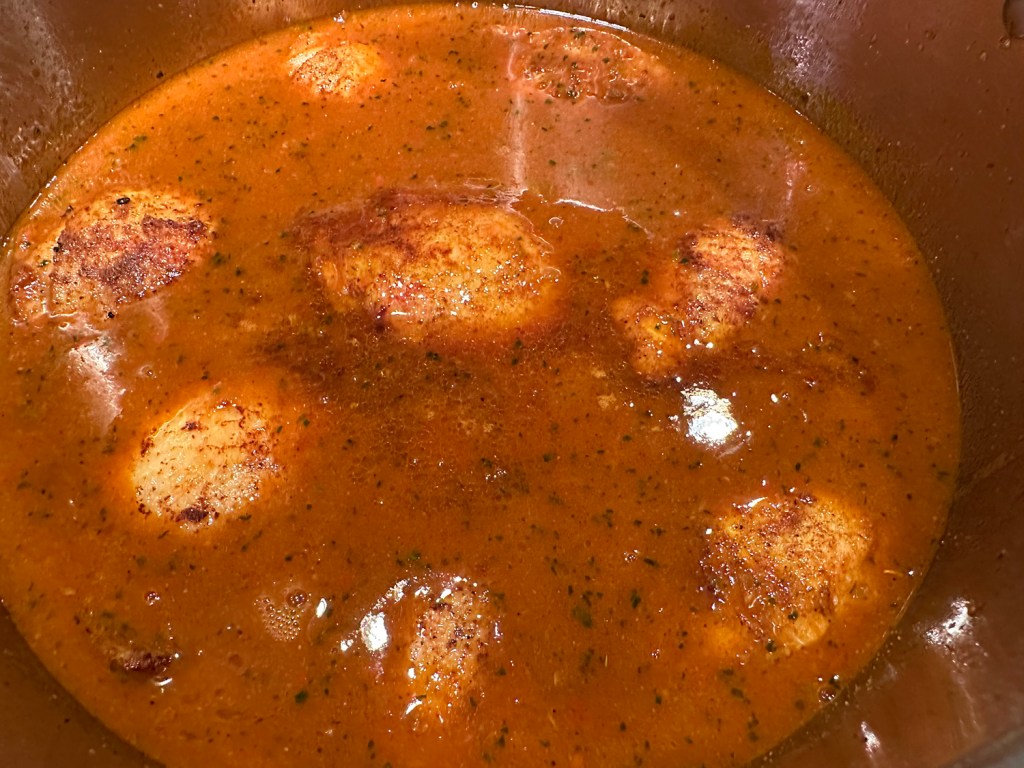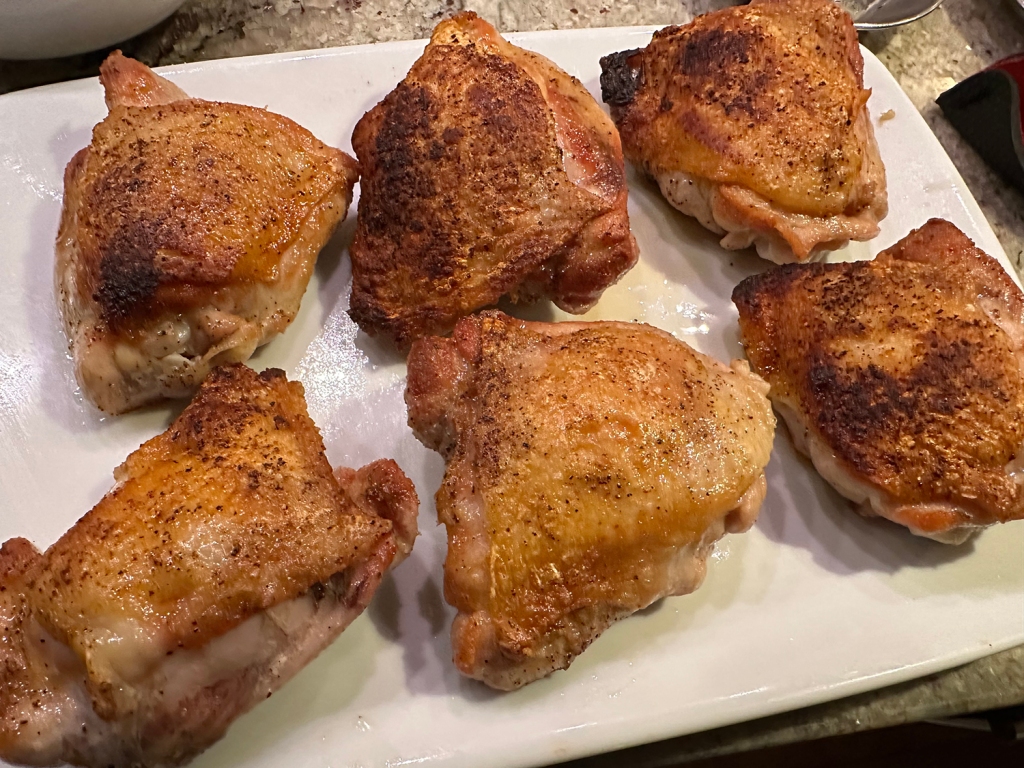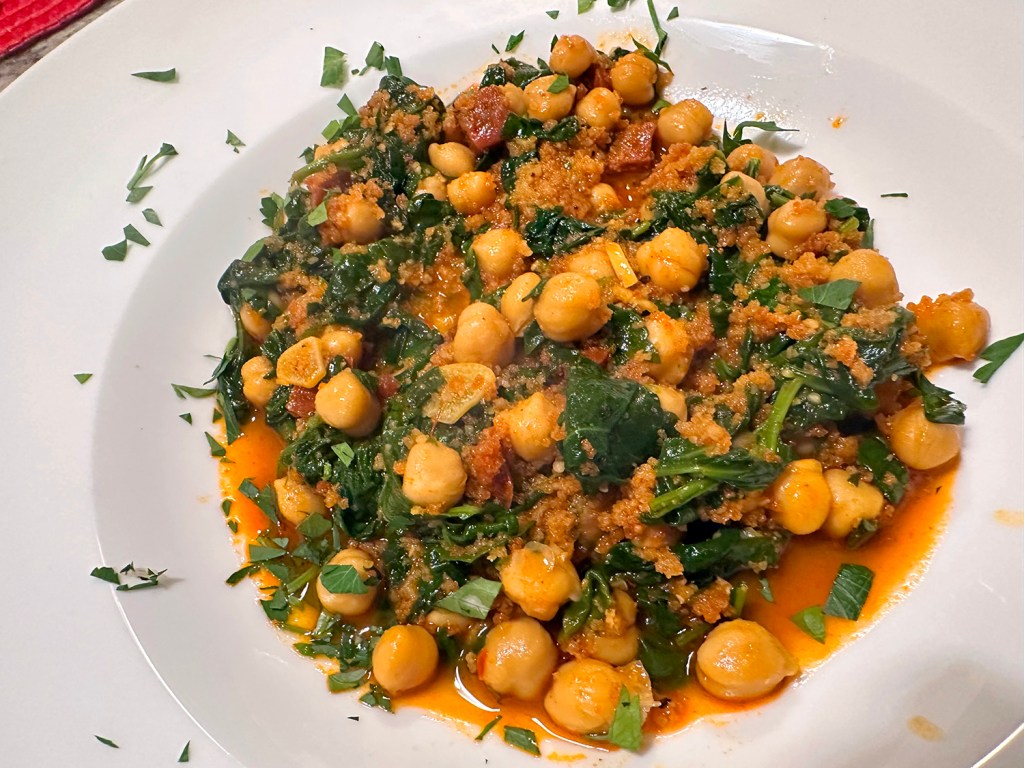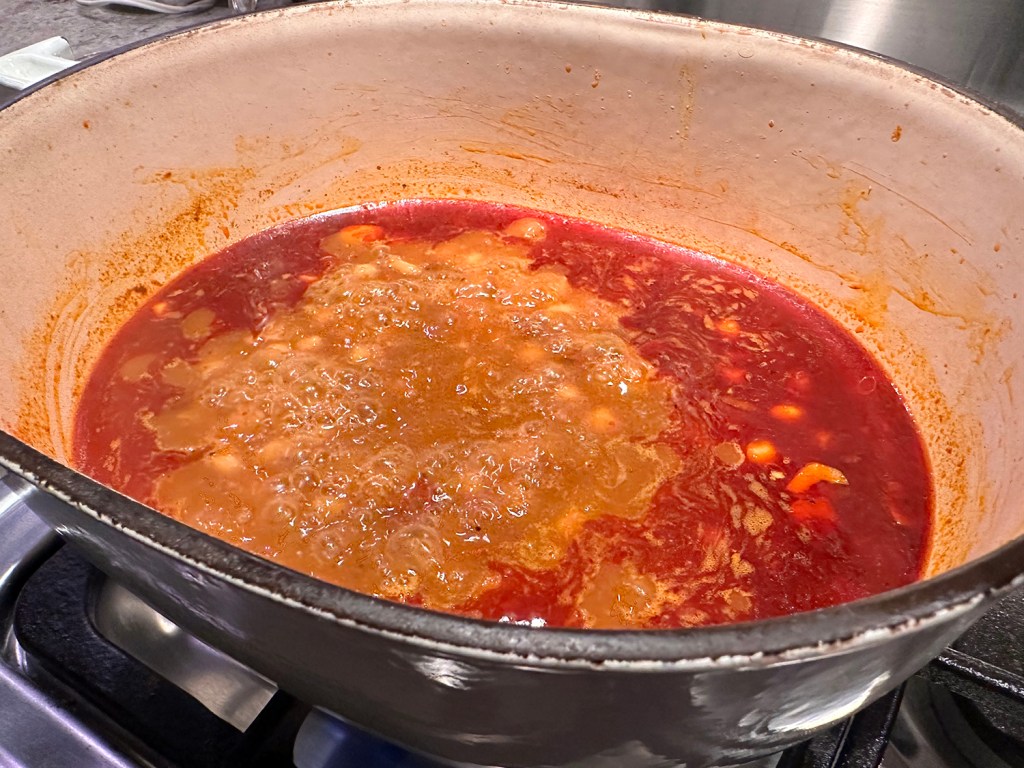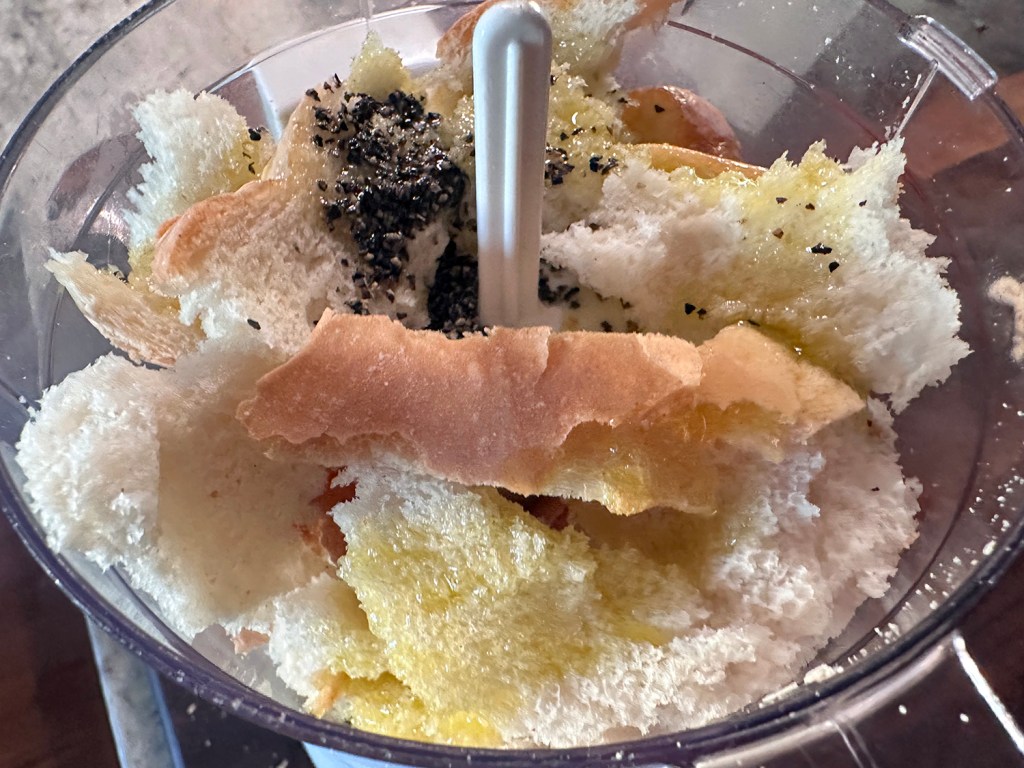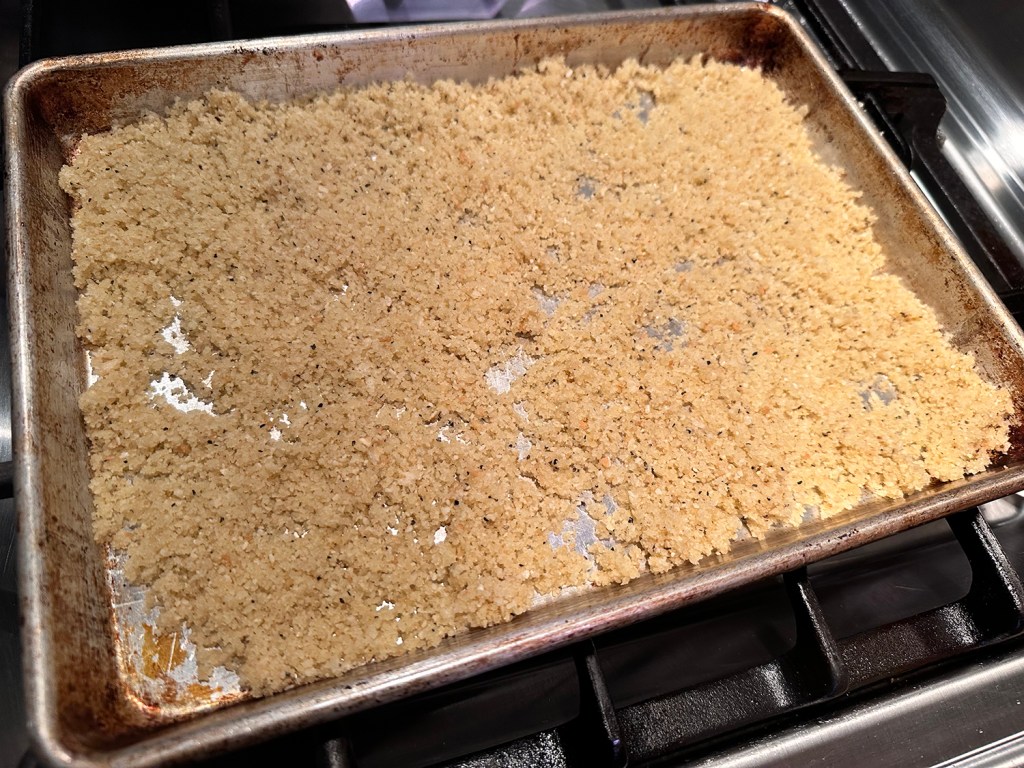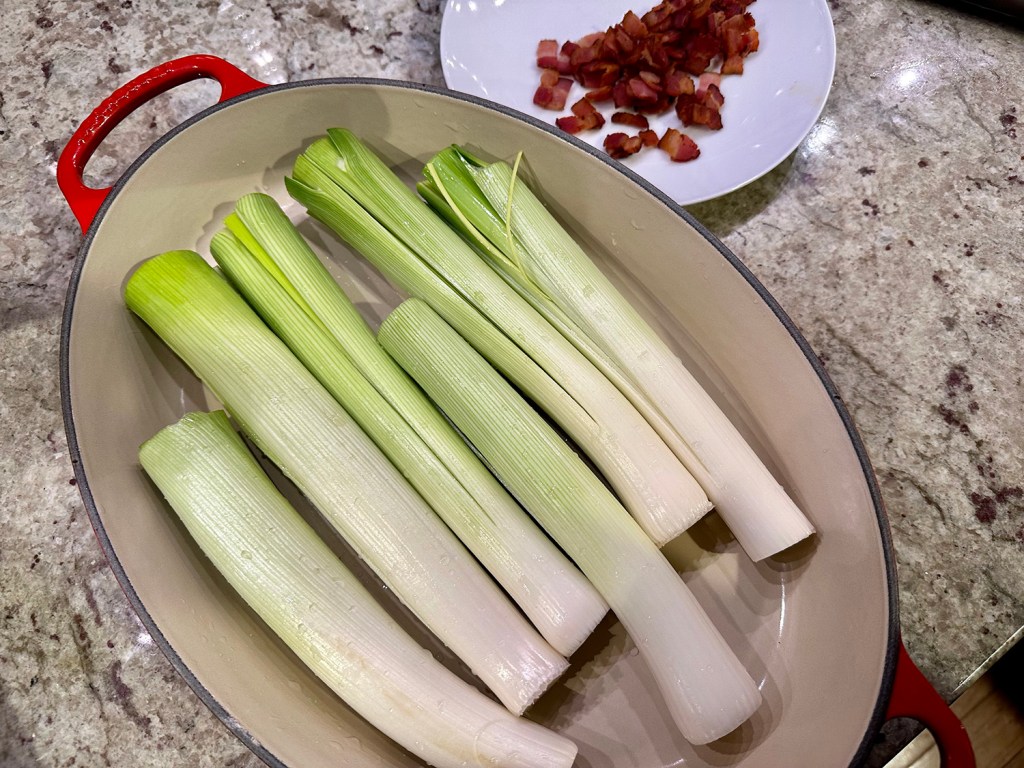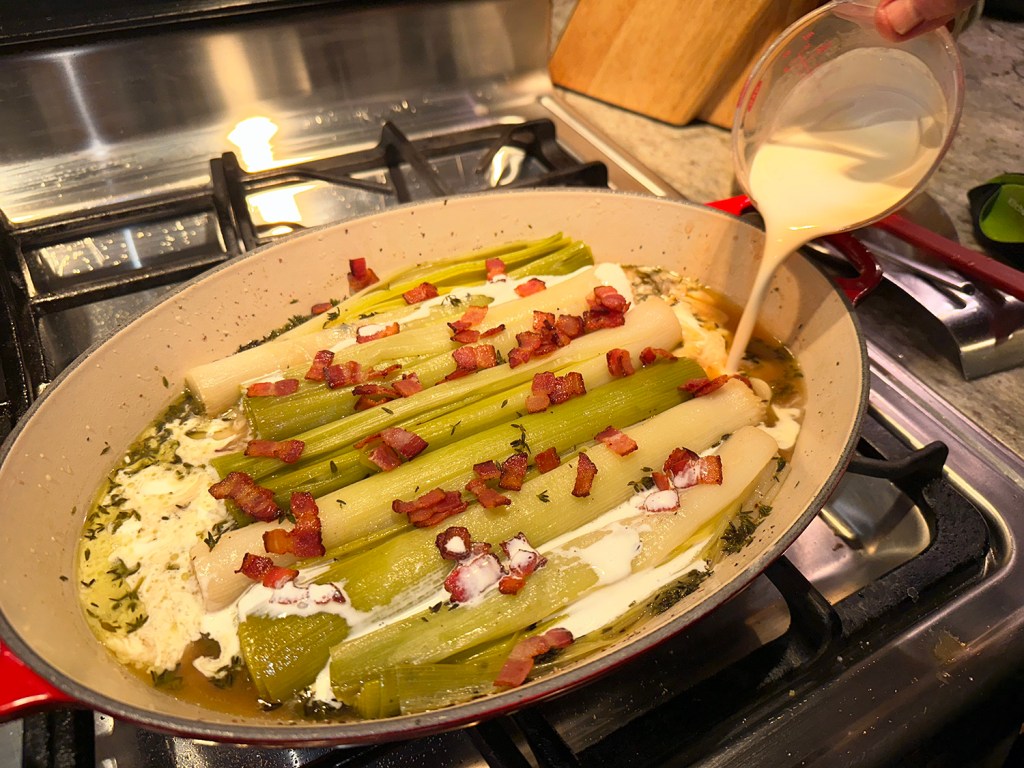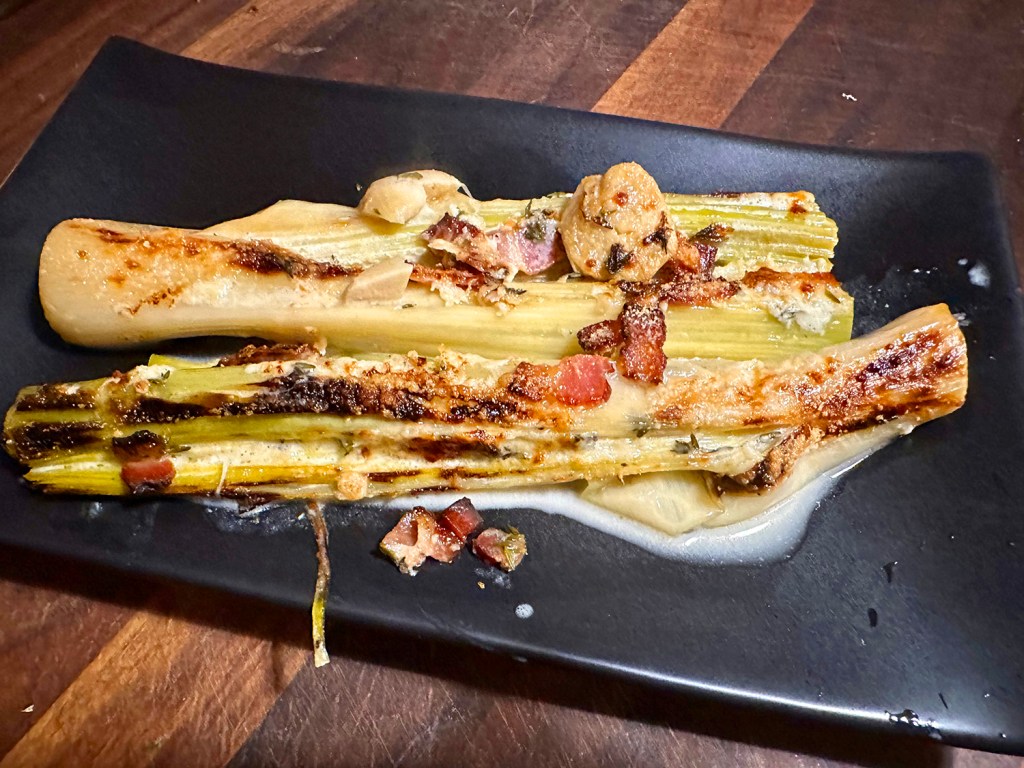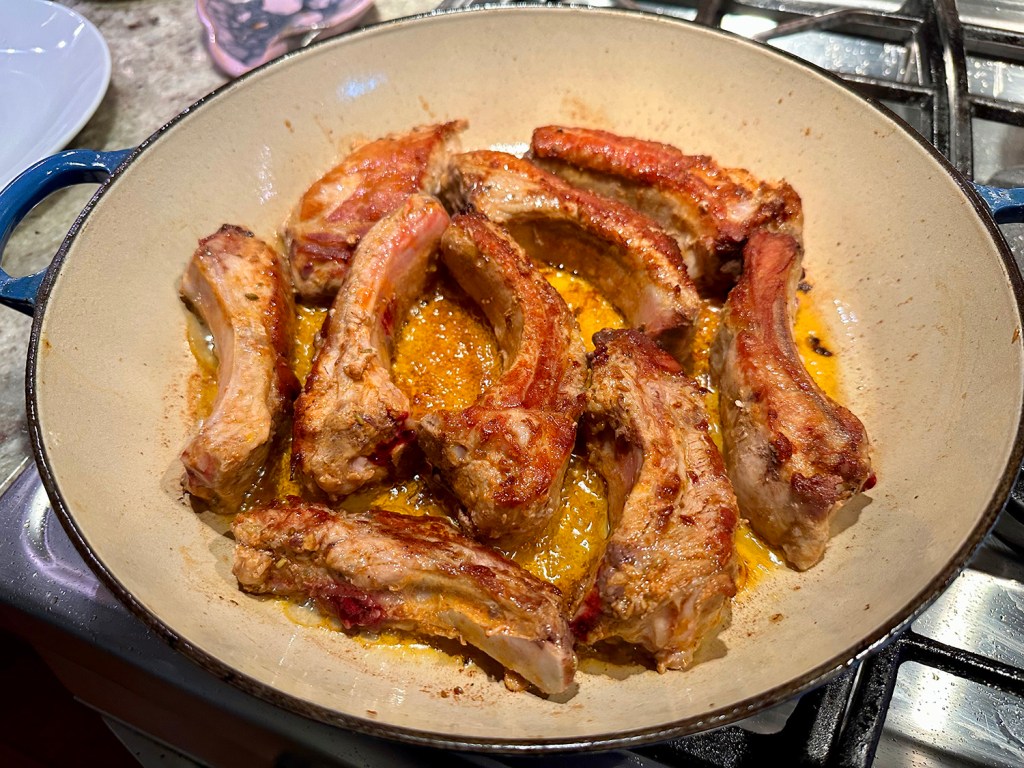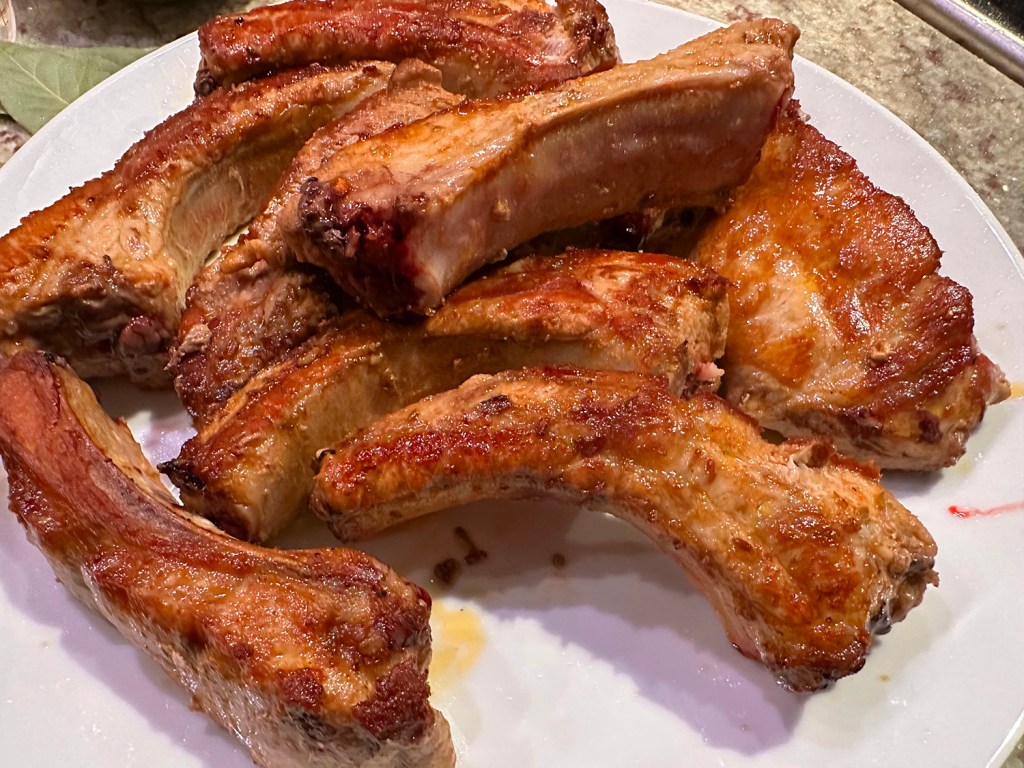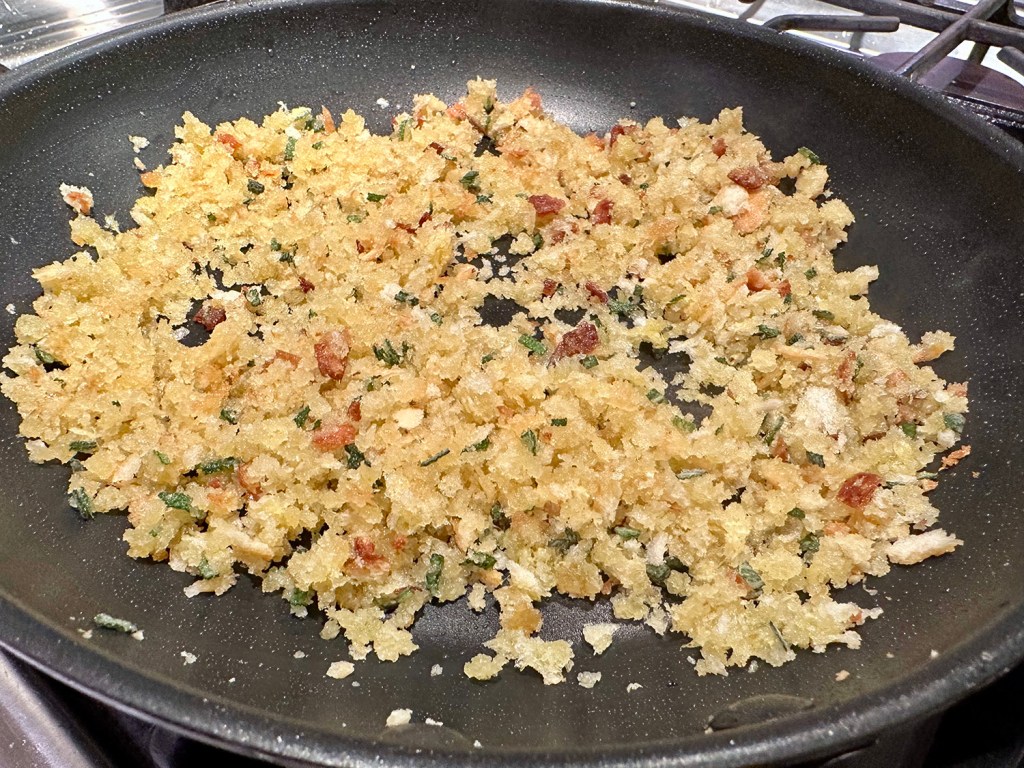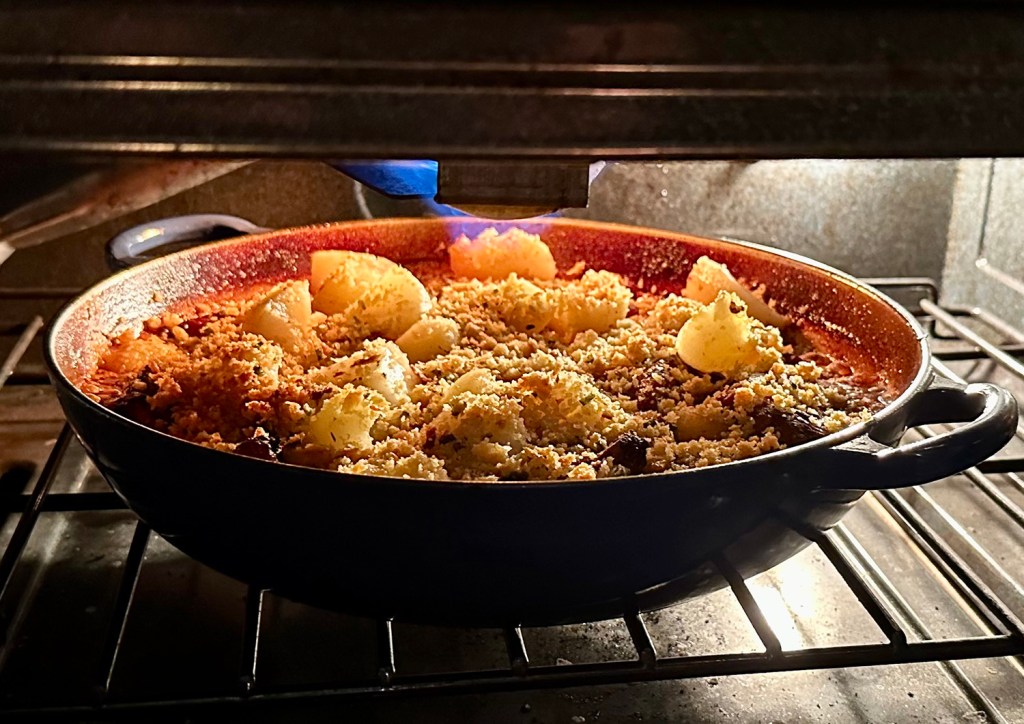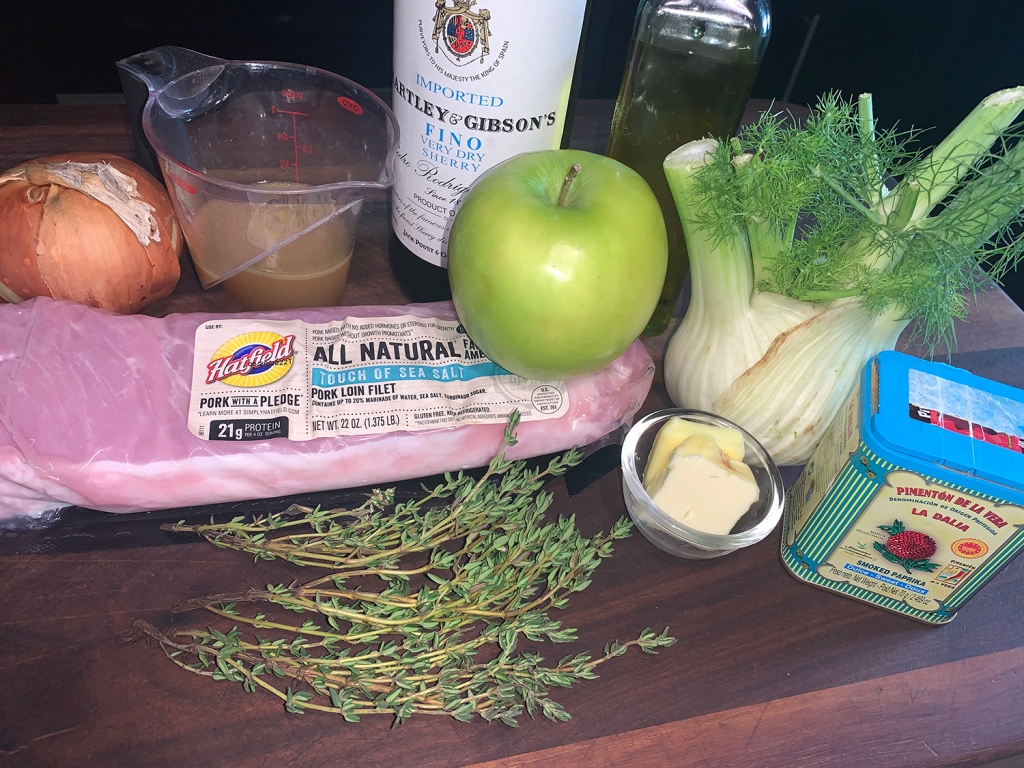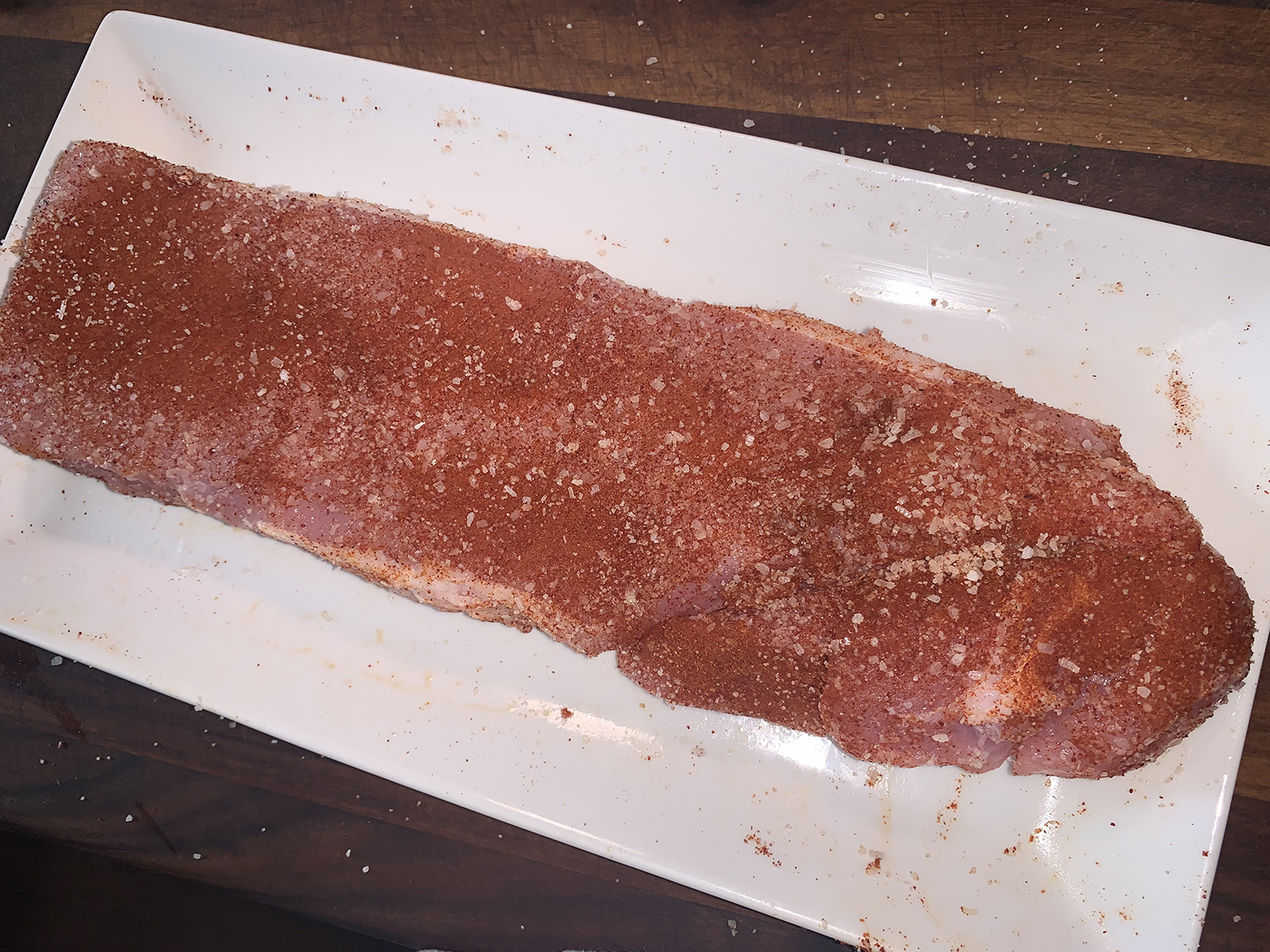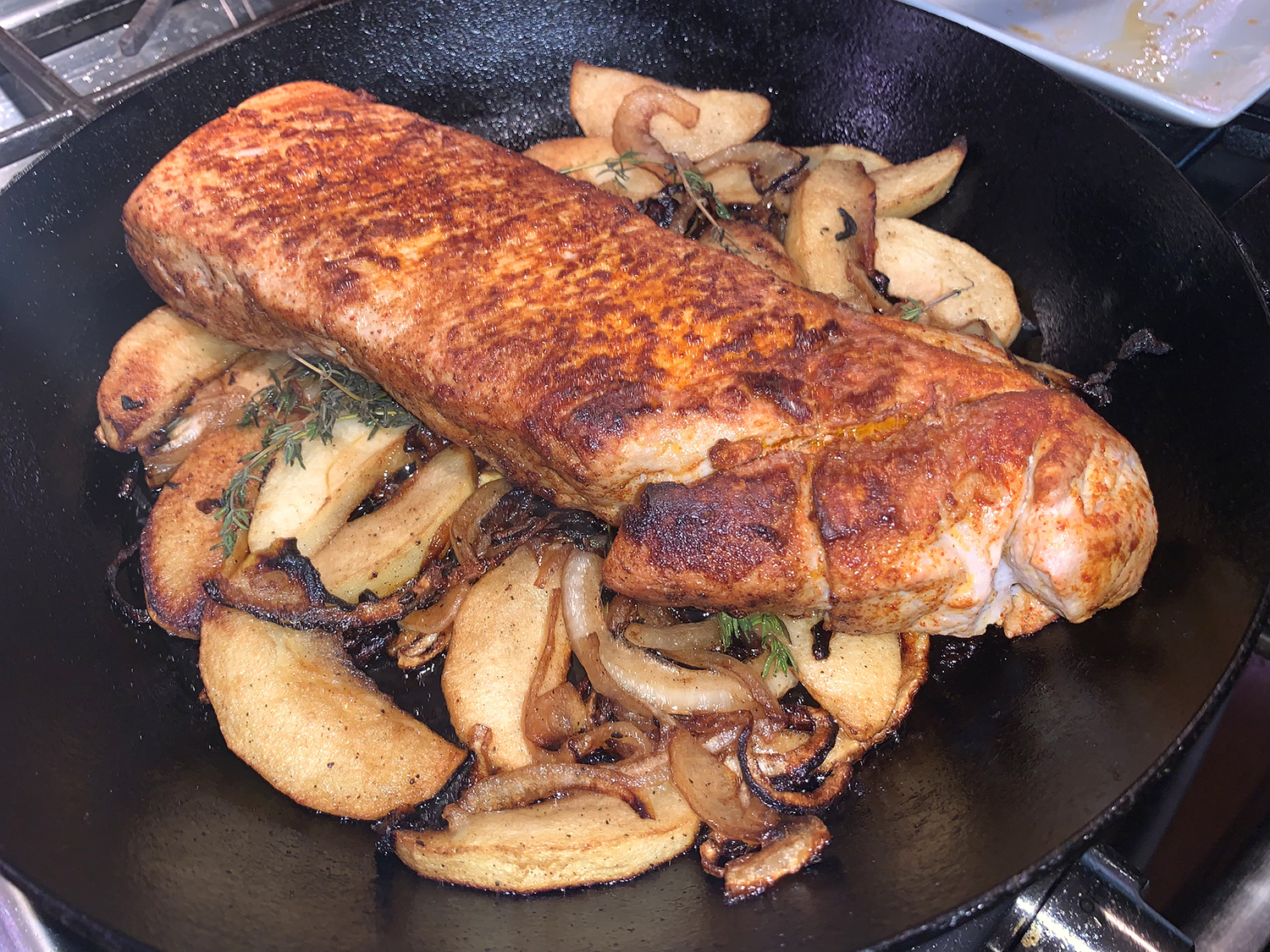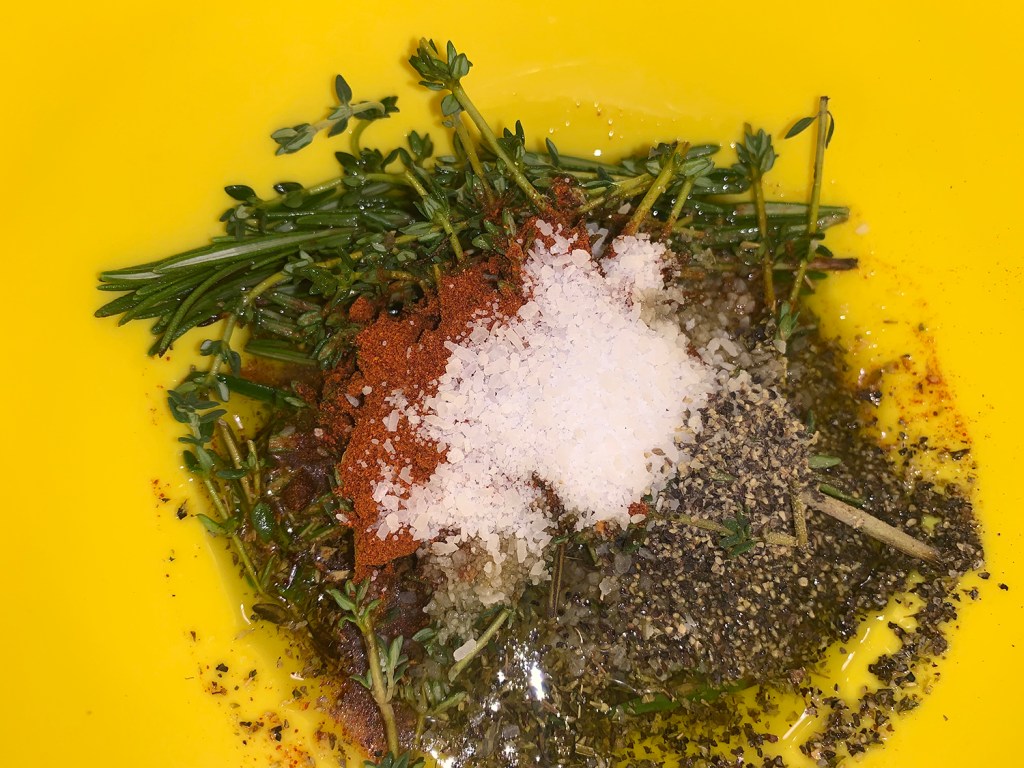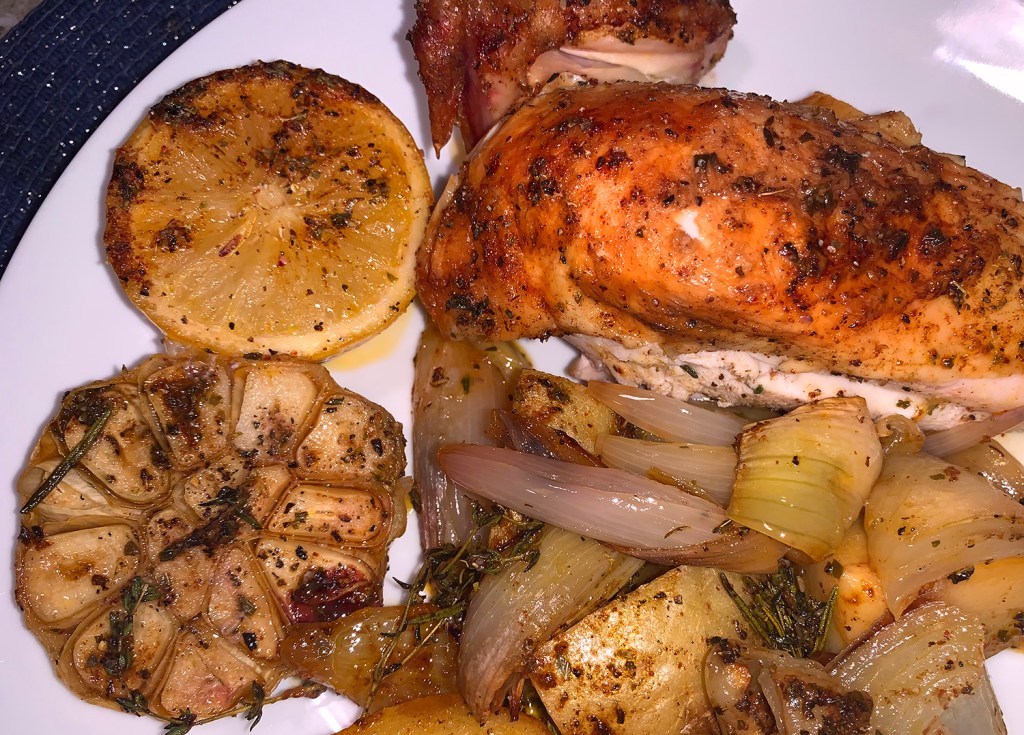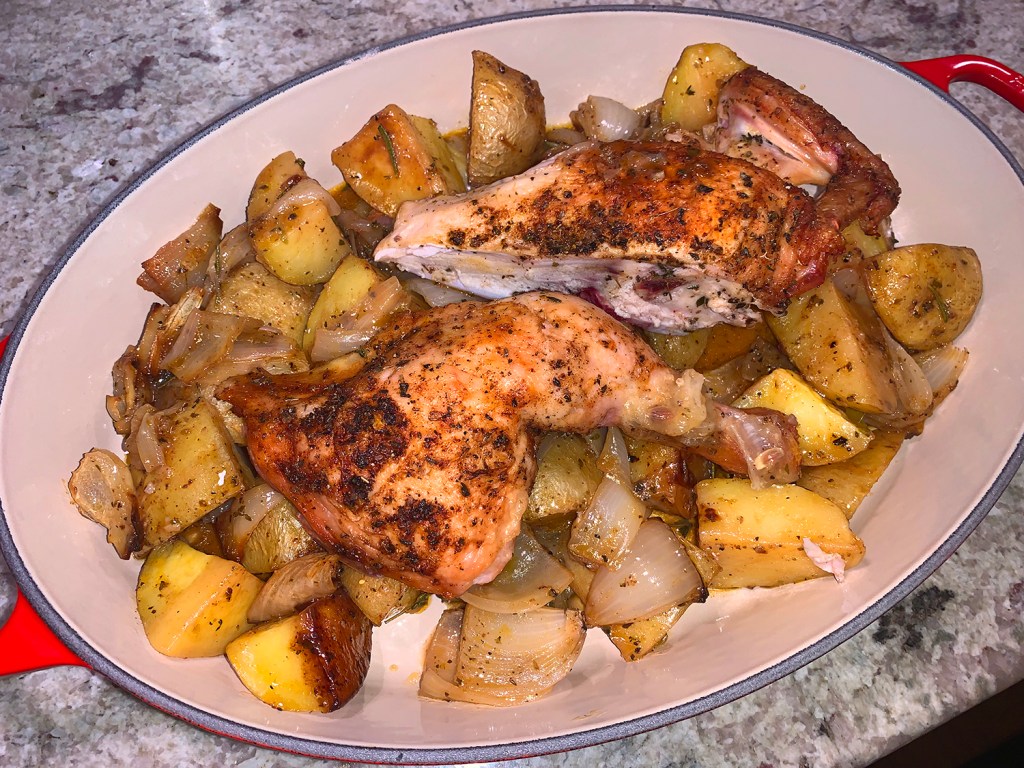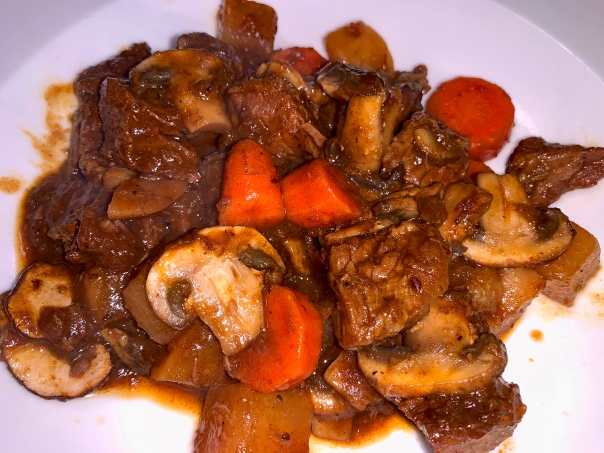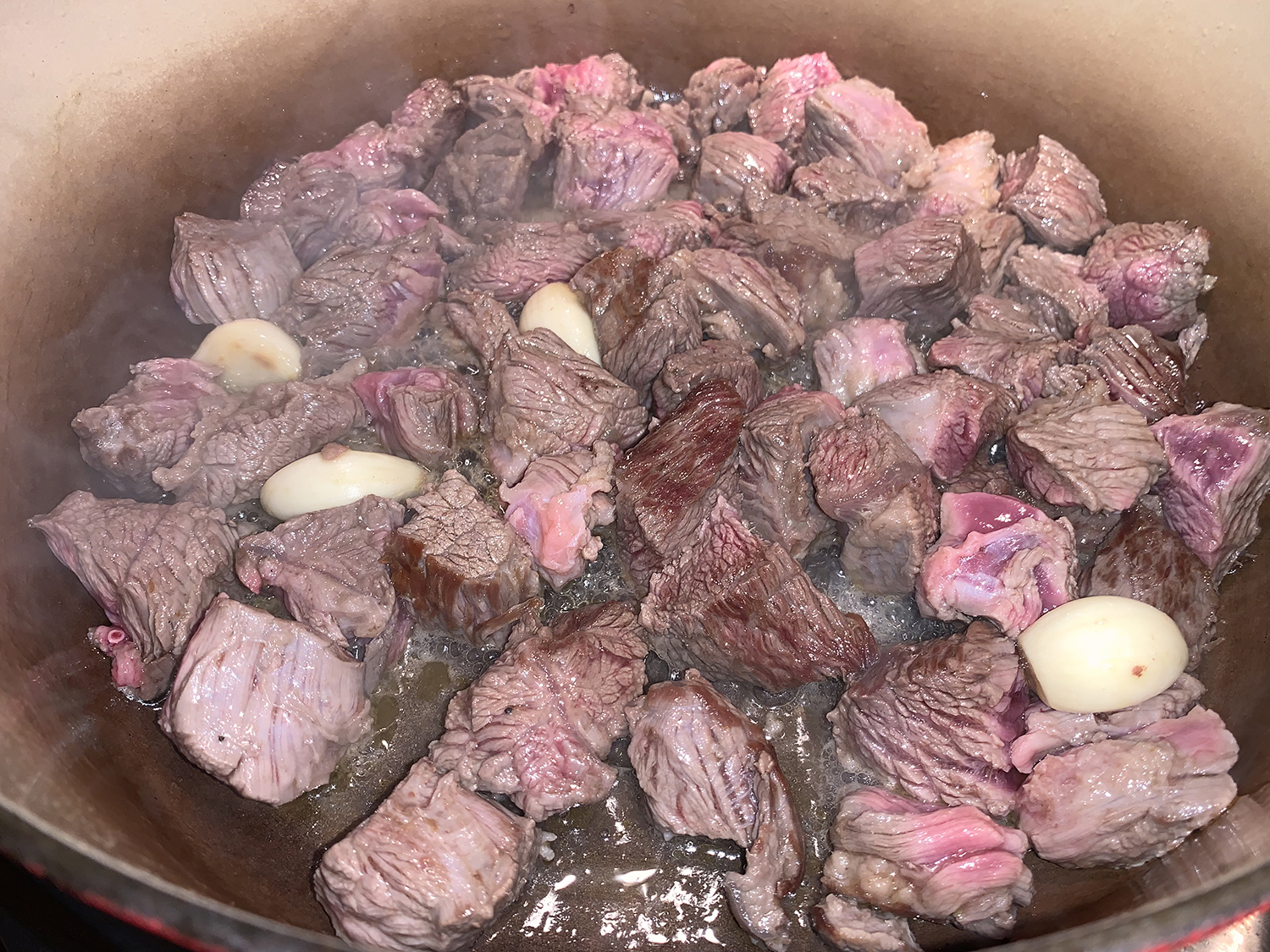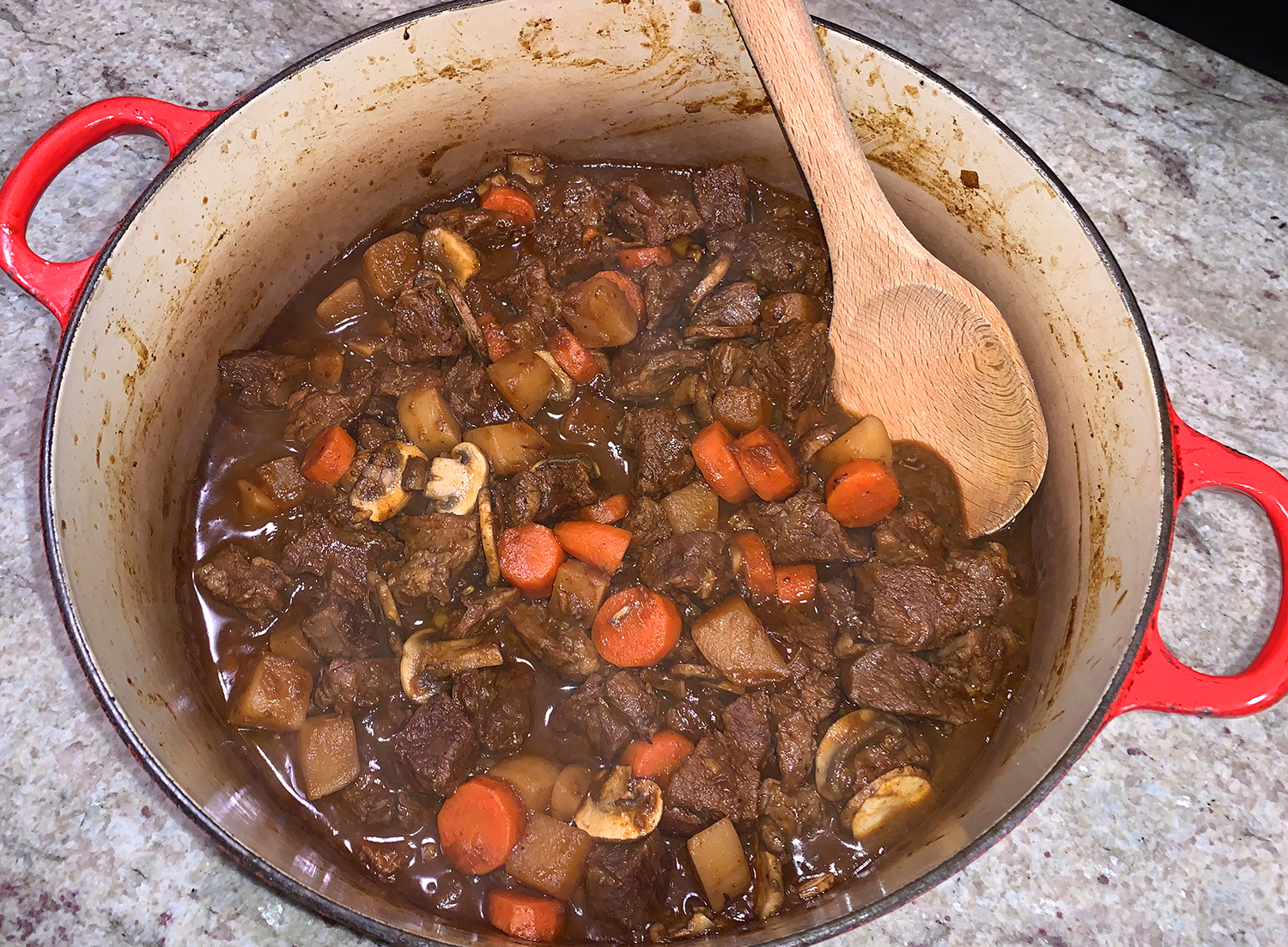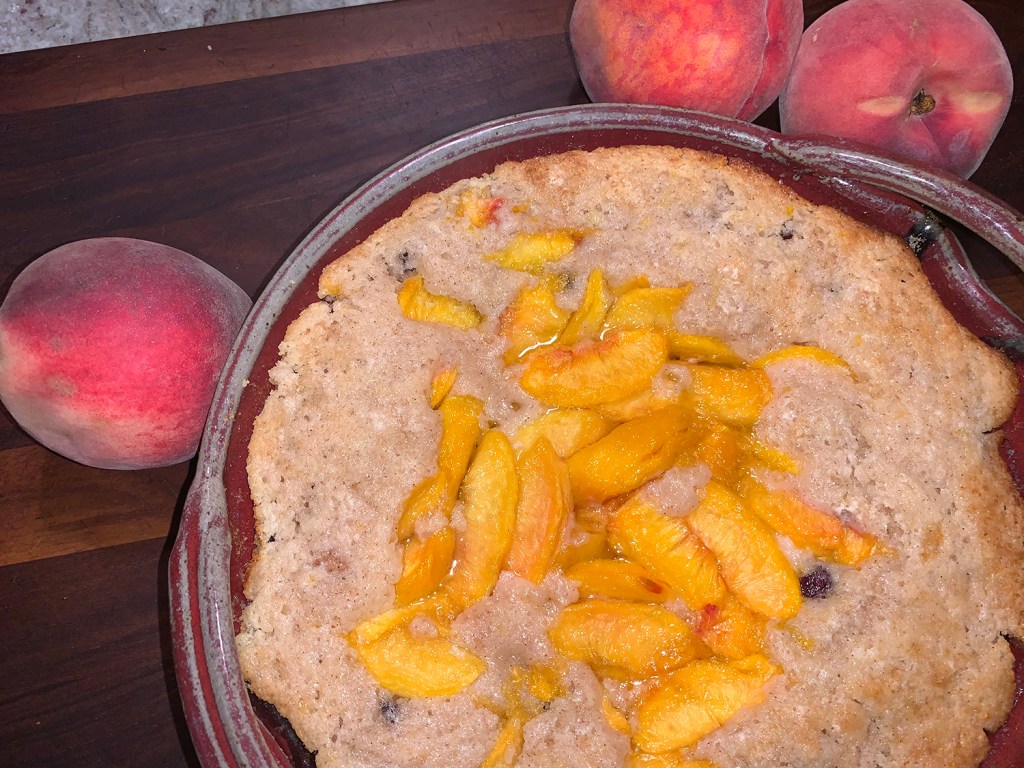What home cook doesn’t want a quick dinner without too much prep, is healthy, and is ready to eat in under an hour? This lovely recipe fits the bill. Nice bright flavors, delicate flaky fish and a bit of punch from the paprika (we used smoked paprika).
Flaky white cod is one of the more widely distributed and moderately priced fish available. Its mild flavor can be used in countless different dishes, but we think it’s at its best when braised with assertive flavorings, like the sweet peppers, thyme, garlic, and paprika of peperonata, a classic Spanish dish.

For this Spanish-style braised cod recipe, we laid down a base of sautéed onion, bell pepper, garlic, and paprika, to which we added tomatoes, fresh thyme, and wine. Once the broth was prepared, we simply nestled the pieces of fish down into the sauce, dropped the heat to low, covered the skillet, and let the fish cook in the moist environment. Within about 10-15 minutes, the fish was cooked through—the result being a tender, moist, and very well seasoned braised cod recipe.
Halibut, snapper, tilapia, bluefish, monkfish, or sea bass fillets are all good substitutions for the cod. If desired, drizzle with extra-virgin olive oil before serving. Smoked paprika (often found in specialty spice markets) is a nice substitution for the paprika here. Serve with soft polenta or crusty bread. Or go low-carb as we did, and just serve the fish and sauce.
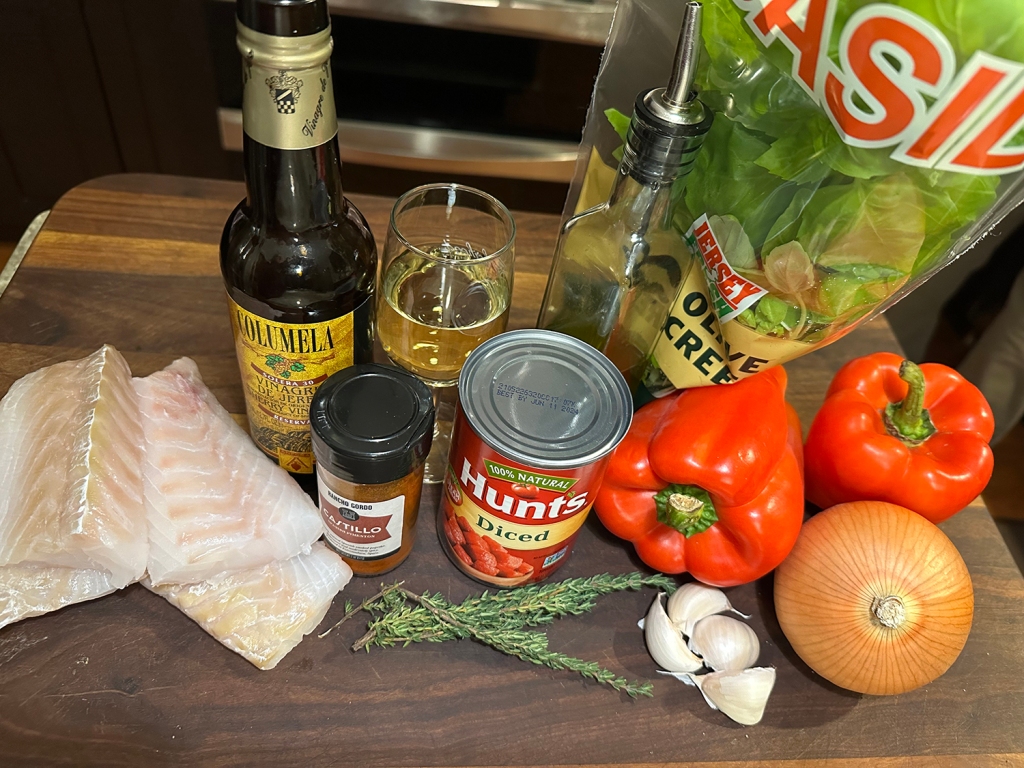
Braised Cod with Peperonata
Ingredients
- 2 Tbsp. olive oil
- 2 red bell peppers, cored and sliced thin
- 1 onion, halved and sliced thin
- 2 tsp. paprika
- Salt and ground black pepper
- 4 garlic cloves, minced
- 1 (14.5-oz.) can diced tomatoes, drained
- ½ cup dry white wine
- 1 tsp. minced fresh thyme
- 4 skinless cod fillets, 1 inch thick
- 2 Tbsp. coarsely chopped fresh basil leaves
- 2 tsp. balsamic vinegar or sherry vinegar


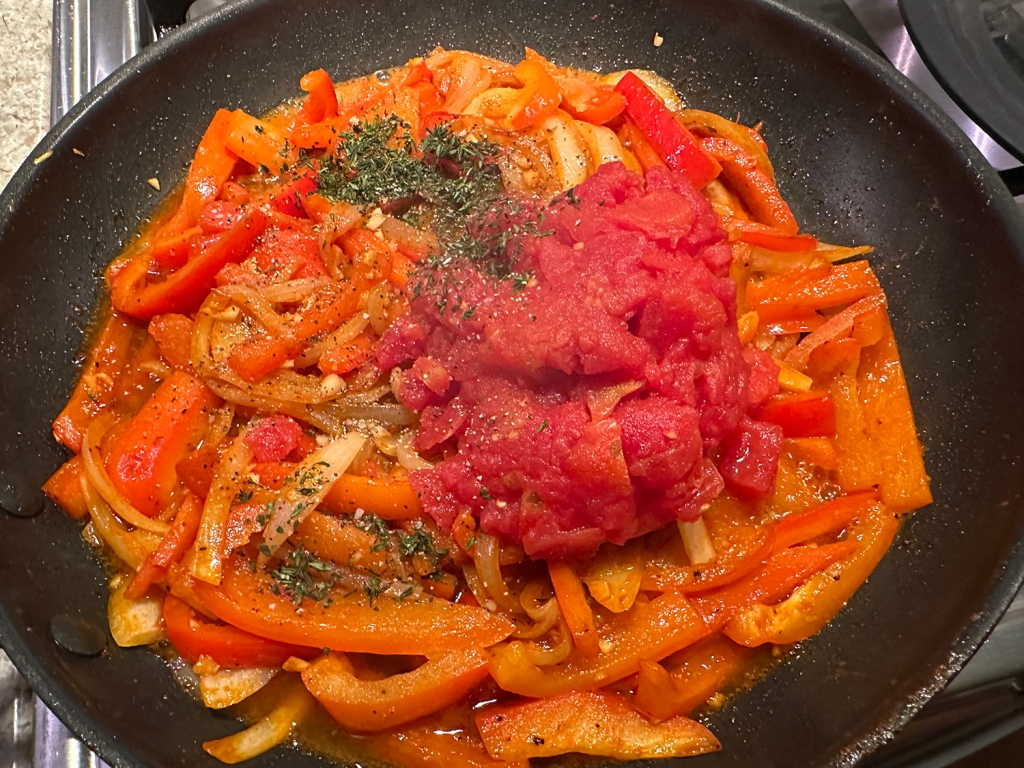


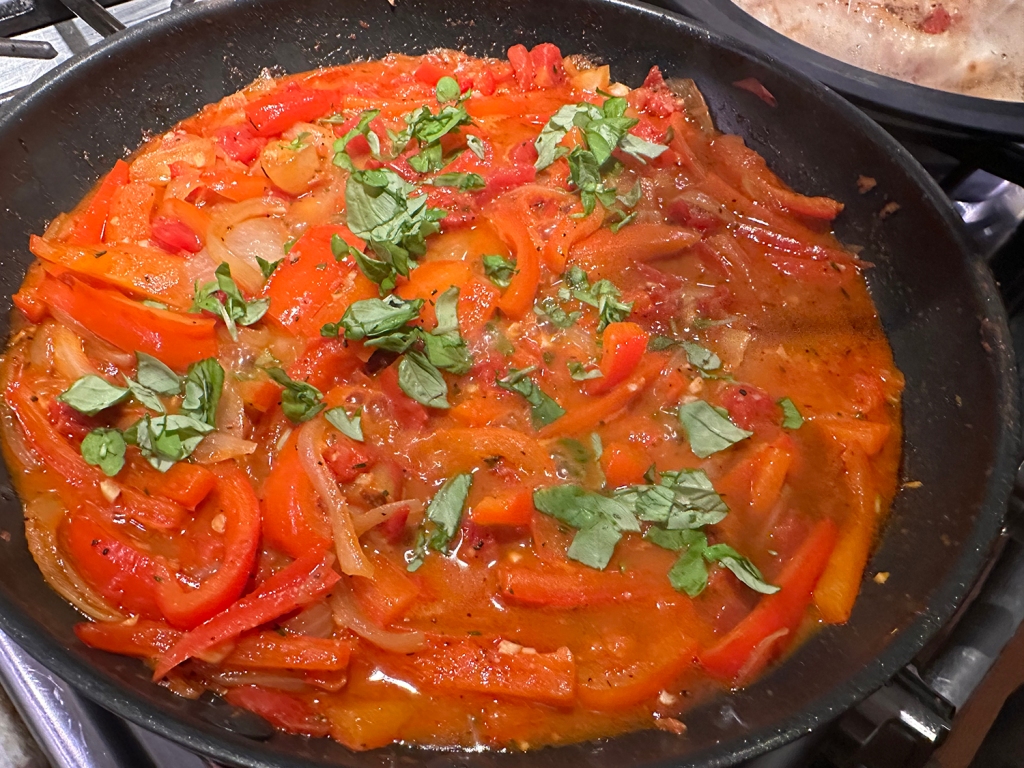

Directions
- Heat oil in 12-inch nonstick skillet over medium heat until shimmering. Add bell peppers, onion, paprika, and 1/2 teaspoon salt and cook until softened, about 7 minutes. Stir in garlic and cook until fragrant, about 30 seconds.
- Stir in tomatoes, wine, thyme, and 1/4 teaspoon pepper, and bring to simmer.
- Pat cod dry with paper towels and season with salt and pepper. Nestle cod into pan and spoon sauce over fish. Cover and cook over low heat until fish flakes apart when gently prodded with paring knife, about 10 minutes. (Ours took 15 minutes before it was flaky.)
- Transfer fish to individual plates. Stir basil and vinegar into sauce and season with salt and pepper to taste. Spoon sauce over fish and serve.
Recipe from America’s Test Kitchen




